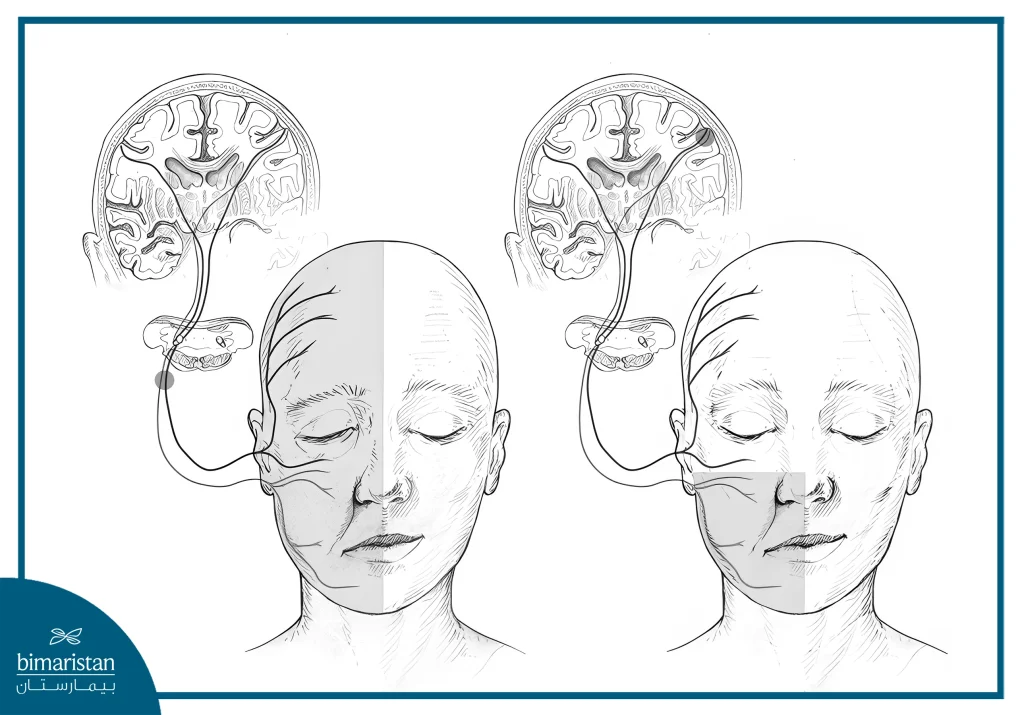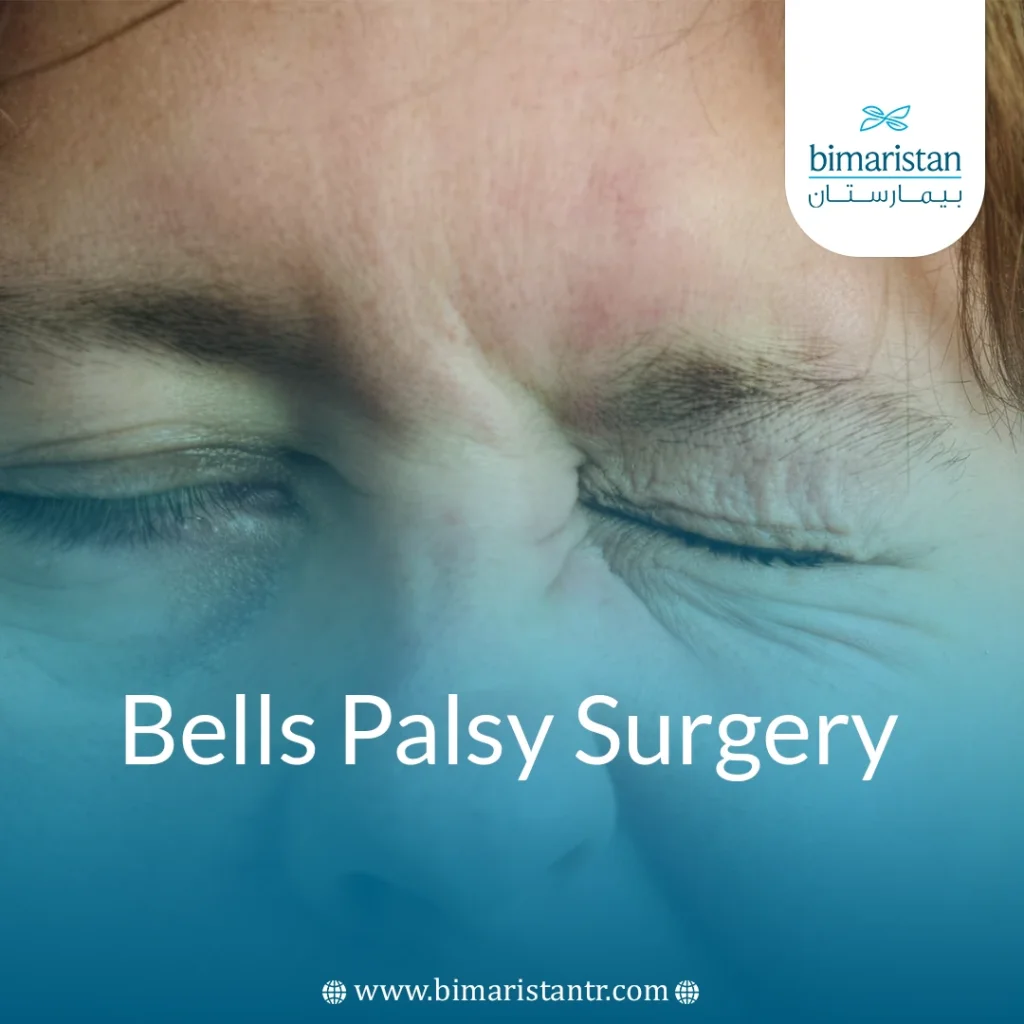Studies indicate that Bell’s palsy affects approximately 1 in 60 individuals during their lifetime, with 10–15% requiring advanced surgical care. Bell’s palsy surgery serves as a crucial solution for persistent cases that do not respond to conventional treatments. Thanks to the advancement of precise surgical techniques, facial function can be effectively restored, leading to significant improvement in patients’ quality of life.
What is Bell’s palsy surgery?
Bell’s palsy surgery is a surgical intervention when a patient with Bell’s palsy does not respond to physical therapy and drug therapy after several months of initiation, and aims to restore the function of the facial nerve in innervating the expressive facial muscles (muscles of expression), and improve the aesthetic appearance of the face.
There is no known and accurate cause of Bell’s palsy or facial nerve paralysis, but this condition is often caused by a viral infection that affects the facial nerve, or due to inflammation and tumors around the facial nerve that press it inside its bony canal, and the most important symptoms of Bell’s palsy are manifested.

The most important symptoms of Bell’s palsy are sudden weakness or paralysis in one half of the face, drooping of the eyelid and mouth, dry eyes and salivation, disturbance of the sense of taste in the affected half of the face, and high sensitivity to sounds in some cases, and facial nerve surgery aims to solve this issue to restore the patient’s facial beauty and functions again.
Types of surgeries used for Bell’s palsy
The types of surgery used to treat Bell’s palsy vary, with surgery aimed at resolving the pressure on the facial nerve or replacing the nerve entirely in cases where the facial nerve has been completely destroyed.
Facial nerve decompression surgery
The goal is to reduce the pressure on the nerve within its bony canal in the skull through surgery, and it is limited to cases of severe paralysis with permanent nerve damage.
Nerve Graft Surgery
In this surgery, the damaged facial nerve is connected to healthy nerves (such as the hypoglossal or auditory nerve), gradually restoring movement.
Muscle Transplant Surgery
A small muscle is transferred from another part of the body to compensate for facial movement, and sometimes more than one muscle is transferred. This surgery is used in cases where Bell’s palsy has persisted for more than two years, resulting in atrophy of the facial muscles.
Reconstructive Plastic Surgery
The aim is to improve the aesthetic appearance of the face without restoring movement. The focus is on correcting ptosis and the angle of the mouth, where tissues or artificial materials are used to lift the mouth, and a gold weight is implanted in the eyelid to help it close.
After Bell’s palsy surgery: Physical therapy and complications
After bell’s palsy surgery, the patient goes through a significant phase of recovery that includes physical therapy, medical follow-up and prevention of complications, as physical therapy aims to restore the strength and coordination of the facial muscles and prevent muscle stiffness through exercises, and it is applied 3-6 weeks after surgery according to the doctor’s instructions, and it can be summarized in:
- Simple exercises: Facial massage, breathing exercises by slowly inflating and deflating the cheeks, and eye closing exercises.
- Advanced exercises: Smiling slowly, eyebrow raises, balloon blowing, and winking.
- Electrical stimulation (rare): Used to electrically stimulate a muscle to improve communication between the muscle and its nerve.
The postoperative period after Bell’s palsy surgery is very sensitive and has many complications, as in the early stages after surgery, the wound may become infected with a bacterial infection, or internal bleeding may occur in the surgical area, or damage may occur to some neighboring nerves, such as damage to the sublingual nerve, and the person may develop dry eye.
In the late stages, some other complications may appear such as asymmetry of the facial muscles and abnormal movements (mouth movement when trying to close the eye), so during this period the patient must adhere to the instructions of the doctor who performed the operation, adhere to periodic follow-up, and resort to hospitalization as an emergency when some early or late complications appear.
Bell’s Palsy Surgery Success Rates and Future Prospects
The success rates of Bell’s palsy surgery usually depend on the type of surgery performed, but in most cases, the success rates are high, up to 95% in some surgeries and cases, and the percentage may vary depending on several factors, the most important of which are:
- The age of the patient: Success rates for facial nerve palsy surgery are higher in younger individuals than they are in older individuals, as their nerves still have the ability to regenerate.
- Duration of paralysis: The earlier the surgery is performed, the better the results will be.
- Experience of the surgeon: Delicate procedures may require a highly specialized and experienced surgeon to perform them.
- Patient compliance: Regular physical therapy and regular check-ups can increase the chances of recovery by as much as 30-40%.
The outlook after Bell’s palsy surgery is to begin to see the onset of simple movement after several months, followed by the restoration of facial nerve function within less than a year, and ultimately a satisfactory outcome for the patient one year after the procedure.
Is surgery the best option for treating Bell’s palsy?
In fact, surgery for Bell’s palsy is not the first choice in most cases, but it may be necessary in some cases, such as cases of complete paralysis that have not shown improvement with physical therapy and medications, and in cases of serious complications of Bell’s palsy such as dry eye and facial deformities, in which case surgery is indicated to treat Bell’s palsy. In some other cases, the patient may show improvement without resorting to surgery, and this happens in 85% of cases, so it is recommended to try medication and physical therapy before resorting to surgical treatment.
In conclusion, Bell’s palsy is a complex condition that requires precise evaluation and personalized care, with outcomes ranging from natural recovery to advanced Bell’s palsy surgery. At Bimarestan Medical Center, we provide a comprehensive treatment journey that blends cutting-edge technology with medical expertise to restore your smile and confidence. From accurate diagnosis to the latest reconstructive surgical options, we ensure every step of your treatment receives the utmost attention — because your health always deserves the best.
Sources:
- National Institute of Neurological Disorders and Stroke. (2023). Bell’s Palsy fact sheet. U.S. Department of Health and Human Services.
- American Academy of Otolaryngology-Head and Neck Surgery. (2021). Clinical practice guideline: Bell’s palsy.

